Meeting a dog with endless energy and an unwavering spirit is truly remarkable. That’s exactly what I felt when I first encountered the Mountain Feist. These little dynamos are the epitome of enthusiasm and joy, always ready for the next adventure.
I remember the first time I saw one in action. It was like watching a tiny tornado of excitement, darting through the woods with incredible speed and agility. Instantly, I was captivated by their vibrant personality and zest for life. Unlike the larger and more rugged Mountain Cur, the Mountain Feist is smaller but equally spirited, bred for hunting and companionship.
As a lifelong dog lover and owner of a six-year-old English Bullmastiff, I’ve seen many breeds. But there’s something uniquely charming about the Mountain Feist. Their lively character and sheer determination are truly unforgettable, making them a breed that stands out in the world of dogs. With their keen hunting instincts and boundless energy, these dogs are perfect for active families and outdoor enthusiasts.
TABLE OF CONTENTS
- Mountain Feist Quick Breed Summary
- Origins of the Mountain Feist
- Physical Characteristics of the Mountain Feist
- Temperament of the Mountain Feist
- How to Take Care of a Mountain Feist
- How to Train a Mountain Feist
- Most Common Health Issues Among Mountain Feists
- Costs of Owning a Mountain Feist
- FAQs on the Mountain Feist
- So, Is the Mountain Feist Right For You?
Mountain Feist Quick Breed Summary
Origins of the Mountain Feist
The history of the Mountain Feist is as vibrant and spirited as the breed itself. These dogs trace their roots back to the early settlers of the southern United States. The pioneers who ventured into the rugged landscapes of the Appalachian Mountains needed a versatile, hardy dog to assist with hunting and provide companionship. Enter the Mountain Feist, a breed developed from a mix of terriers and other small hunting dogs brought over by European immigrants.
Role in Early American Life
These dogs quickly became invaluable to their owners. Their small size and agility made them perfect for hunting small game, particularly squirrels. In an era when self-sufficiency was crucial, having a reliable hunting companion could mean the difference between a successful hunt and going hungry. The Mountain Feist’s keen nose, sharp eyes, and incredible speed made them the ideal choice for this role.
Development and Refinement
As the breed continued to develop, breeders focused on enhancing the traits that made the Mountain Feist so effective. Selective breeding honed their hunting instincts, intelligence, and loyalty. Unlike the Mountain Cur, which is larger and more rugged, the Mountain Feist remained compact and agile, making them easier to handle and well-suited for the dense forests and challenging terrain of their homeland.
Cultural Significance
The Mountain Feist dog breed is more than just a hunting dog. It is a symbol of the resourcefulness and resilience of the early American settlers. These dogs embody the pioneering spirit, with their tenacity and determination reflecting the qualities admired in the communities that bred them. Over generations, the Mountain Feist became a beloved family companion, cherished for its loyalty, energy, and boundless enthusiasm.
Modern-Day Mountain Feist
Today, the Mountain Feist remains true to its roots. While many are still used for hunting, they have also found their place as beloved family pets. Their playful personality, coupled with their strong work ethic, makes them excellent companions for active families. The breed’s history is a testament to its adaptability and enduring appeal, ensuring that the Mountain Feist continues to capture the hearts of dog lovers everywhere.
Physical Characteristics of the Mountain Feist
The overall appearance of the Mountain Feist is one of sleek athleticism and readiness. Their bodies are built for movement, reflecting their heritage as hunting dogs. They possess a natural elegance in their posture and movements, always seeming ready to spring into action. Their alert and energetic demeanor is unmistakable, making them not only efficient hunters but also delightful companions.
Size and Build
The Mountain Feist is a small to medium-sized dog, perfectly balanced between strength and agility. They typically stand between 12 to 18 inches tall at the shoulder and weigh between 10 to 30 pounds. Despite their compact size, they have a muscular build that hints at their robust character and tireless energy.
Coat and Color
The Mountain Feist’s coat is short, smooth, and dense, providing just the right amount of protection without being too heavy. This makes it easy to groom and maintain. The breed comes in a variety of colors, adding to its visual appeal. Common colors include black, white, red, blue, and a mix of these shades. Some Mountain Feists may have striking patterns like brindle or piebald, giving each dog a unique look.
Head and Expression
The head of a Mountain Feist is proportionate to its body, with a slightly rounded skull and a strong, straight muzzle. Their eyes are bright and expressive, often radiating intelligence and alertness. Eye colors can vary from dark brown to hazel, complementing their coat. The ears are set high and can be erect or semi-erect, adding to their alert and ready-for-action appearance.
Tail and Limbs
Mountain Feists often have a straight, medium-length tail that they carry with pride. Some may have a naturally bobbed tail. Their limbs are well-muscled and strong, built for speed and agility. Their paws are compact and round, perfect for quick, nimble movements in various terrains.
Temperament of the Mountain Feist
From Adobe Stock
The Mountain Feist is more than just a hunting dog; it’s a vibrant and dynamic companion. Their temperament is a delightful blend of energy, intelligence, loyalty, and playfulness. As someone who has spent a lifetime around dogs, I find their personality truly captivating. Let’s dive into the distinct traits that make the Mountain Feist such an engaging and lovable breed.
Energetic and Lively
The Mountain Feist is a bundle of energy. These dogs are always on the move, ready to leap into action at a moment’s notice. Whether it’s chasing squirrels or playing fetch, their enthusiasm is boundless.
I remember watching a Mountain Feist dart around the yard, never seeming to tire. Their zest for life is contagious. It’s hard not to smile when you see them in action.
Intelligent and Curious
Mountain Feists are incredibly intelligent and curious. They love to explore their surroundings and are always up for a new challenge. This curiosity makes them excellent problem-solvers.
I’ve seen my friend’s Feist figure out puzzles that left other dogs stumped. Their intelligence makes training a breeze. They quickly pick up new commands and tricks.
Loyal and Affectionate
Despite their energetic nature, Mountain Feists are deeply loyal and affectionate. They form strong bonds with their families and thrive on human interaction. Their loyalty is unwavering.
My own Bullmastiff, though much larger, shares this trait. It’s heartwarming to see how dedicated these dogs can be to their loved ones. Their affectionate nature makes them wonderful companions.
Alert and Protective
Mountain Feists are naturally alert and protective. They have a keen sense of their surroundings and are quick to alert their owners to anything unusual. This makes them excellent watchdogs.
I’ve noticed that they are always on guard, ears perked up and ready. Their protective instinct is strong, yet they are not aggressive. They balance vigilance with a friendly demeanor.
Playful and Fun-loving
These dogs are incredibly playful and fun-loving. They enjoy games and activities that engage their minds and bodies. Their playful spirit is infectious.
Watching a Mountain Feist play is a joy. They bring a sense of fun and excitement to any activity. Their playful nature ensures that there’s never a dull moment with them around.
Independent and Bold
Mountain Feists are known for their independence and boldness. They have a confident demeanor and aren’t afraid to explore on their own. This trait makes them quite adventurous.
I’ve seen them tackle new environments with ease. Their boldness is impressive, especially given their small size. They have the heart of a much larger dog, always ready to face challenges head-on.
How to Take Care of a Mountain Feist
These energetic and intelligent dogs thrive on proper nutrition, regular grooming, and plenty of exercise. Drawing from my experience with dogs, including my own Bullmastiff, I’ve learned that meeting these needs not only keeps them healthy but also strengthens the bond between you and your furry friend.
Feeding
Proper nutrition is crucial to the overall health and vitality of the Mountain Feist dog breed. These active dogs need a balanced diet to support their high-energy lifestyle. Choose high-quality dog food that lists meat as the first ingredient to ensure they get the protein they need.
- Portion Control: It’s important to measure their food to avoid overfeeding. Typically, a Mountain Feist will need about 1 to 1.5 cups of dry dog food per day, split into two meals. Keeping an eye on their portions helps maintain a healthy weight.
- Nutritional Needs: Look for dog food that contains a good mix of protein, fats, and carbohydrates. Avoid fillers like corn and soy, as these can lead to unnecessary weight gain and health issues.
- Treats and Supplements: Use treats sparingly to avoid weight gain. Consider supplements like fish oil for a shiny coat and joint health. Healthy treats like fruits and vegetables can also be a good addition.
- Hydration: Always ensure they have access to fresh, clean water. Hydration is key to maintaining their energy levels and overall health.
- Special Diets: If your dog has specific health needs or allergies, consult with your vet to choose the right diet. Some Feists may require grain-free or hypoallergenic foods.
- Feeding Schedule: Stick to a consistent feeding schedule to help regulate their digestion. This also helps with house training and establishing a routine.
Grooming
Maintaining a regular grooming routine is essential for keeping your Mountain Feist clean and healthy. Due to their short, smooth coat, grooming a Feist is relatively easy, but it still requires regular attention.
- Brushing: Brush your Mountain Feist once or twice a week to remove loose hair and dirt. A soft-bristle brush or grooming glove works well to keep their coat in good condition. Regular brushing helps to reduce shedding and keeps their coat shiny and healthy.
- Bathing: Bathe them every few months or when they get particularly dirty. Use a mild dog shampoo to avoid skin irritation and maintain their coat’s natural oils. Ensure to rinse thoroughly to avoid any residue that might irritate their skin.
- Nail Trimming: Keep their nails trimmed to prevent discomfort and potential injury. Aim to trim their nails every three to four weeks to keep them at a healthy length. Be careful not to cut too close to the quick, which can be painful and cause bleeding.
- Ear Cleaning: Regularly check and clean their ears to prevent infections. Use a gentle ear cleaner and a cotton ball to remove any dirt or wax buildup. Avoid using cotton swabs as they can damage the ear canal.
- Dental Care: Brush their teeth several times a week to maintain good oral health. Use a dog-specific toothpaste and a soft-bristle toothbrush. Dental chews and toys can also help keep their teeth clean.
- Coat Health: Keep an eye on their skin and coat for any signs of irritation, parasites, or unusual shedding. Regular grooming sessions are an excellent time to check for these issues and address them promptly.
Exercise
Providing adequate exercise is vital for a Mountain Feist, given their high energy levels and natural hunting instincts. These dogs need plenty of physical and mental stimulation to stay happy and healthy.
- Daily Walks: Aim for at least one hour of walking each day. This helps burn off their abundant energy and keeps them fit. Vary the routes to keep their interest and provide new experiences.
- Playtime: Engage them in interactive play, such as fetch or tug-of-war. Their agility and speed make these games particularly enjoyable and beneficial. Playtime is also a great opportunity to strengthen your bond.
- Mental Stimulation: Provide puzzle toys or training games to challenge their minds. Feists are smart and need activities that engage their intelligence to prevent boredom. Consider hiding treats around the house or yard for them to find.
- Off-Leash Exercise: If you have a secure, fenced area, allow them some off-leash time to run and explore. This gives them the freedom to expend their energy and satisfies their natural curiosity.
- Socialization: Regularly expose them to new people, dogs, and environments. This helps them become well-rounded and adaptable, reducing the risk of behavioral issues.
- Outdoor Adventures: Take them on hikes or nature walks to engage their senses and satisfy their adventurous spirit. These outings provide excellent physical and mental stimulation.
How to Train a Mountain Feist
From Adobe Stock
These intelligent, eager-to-please dogs are quick learners, but their spirited and independent nature adds a unique twist to the training process. Whether you’re teaching them basic commands or advanced tricks, understanding their temperament and using effective techniques will make the journey enjoyable for both you and your furry friend.
Positive Reinforcement
Using positive reinforcement is key to successful training with a Mountain Feist. These dogs respond well to rewards and praise, making this approach highly effective.
- Treats and Praise: Reward your Feist with treats and verbal praise whenever they follow a command correctly. This reinforces the behavior and makes them more likely to repeat it.
- Consistency: Be consistent with your commands and rewards. Consistency helps your dog understand what is expected of them and speeds up the learning process.
- Patience: Training takes time and patience. Avoid getting frustrated if your dog doesn’t get it right away. Keep sessions short and positive to maintain their interest.
Basic Commands
Teaching basic commands is the foundation of good behavior and can help manage your Mountain Feist’s energetic nature. Start with essential commands like sit, stay, come, and down.
- Sit: Hold a treat close to their nose and move your hand up, allowing their head to follow the treat and causing their bottom to lower. Once in a sitting position, say “sit” and give the treat.
- Stay: Ask your dog to sit. Open your palm in front of you and say “stay.” Take a few steps back. If they stay, reward them with a treat and praise.
- Come: Put a leash on your dog. Get down to their level and say “come” while gently pulling on the leash. When they come to you, reward them with a treat and affection.
Socialization
Socialization is crucial for a well-behaved and confident Mountain Feist. Early exposure to different people, environments, and other animals helps prevent fear and aggression.
- Puppy Classes: Enroll your Feist in puppy classes to introduce them to other dogs and people in a controlled environment. These classes also provide basic obedience training.
- Daily Walks: Take your dog on daily walks in various settings. This helps them get used to different sights, sounds, and smells.
- Meeting New People: Encourage positive interactions with new people. Allow friends and family to offer treats and gentle petting to create positive associations.
Advanced Training and Tricks
Once your Mountain Feist has mastered basic commands, you can move on to advanced training and tricks. These activities provide mental stimulation and keep your dog engaged.
- Agility Training: Set up an agility course in your backyard with jumps, tunnels, and weave poles. Agility training is great for physical exercise and mental stimulation.
- Scent Work: Teach your Feist to use their nose to find hidden treats or objects. Start with simple hiding places and gradually increase the difficulty.
- Tricks: Train your dog to perform tricks like shake, roll over, or play dead. Use the same positive reinforcement techniques as with basic commands.
Addressing Behavioral Issues
Addressing behavioral issues early is important to prevent them from becoming habits. Common issues include excessive barking, digging, and chasing.
- Excessive Barking: Identify the cause of the barking and address it. If your dog barks out of boredom, provide more exercise and mental stimulation. Use the “quiet” command and reward them when they stop barking.
- Digging: Provide a designated digging area if your Feist loves to dig. Redirect their digging to this area and reward them for using it.
- Chasing: Use a long leash to control chasing behavior. Practice recall commands to bring them back to you. Reward them for returning to you instead of chasing.
Most Common Health Issues Among Mountain Feists
Owning a Mountain Feist comes with the joy of having an energetic and loyal companion by your side. However, like any breed, they have their share of health concerns that owners should be aware of. Understanding these common health issues can help you be proactive in managing your dog’s well-being.
Hip Dysplasia
Hip dysplasia is a genetic condition that affects the hip joints, causing them to develop improperly. This can lead to pain and mobility issues as your dog ages.
- Symptoms: Watch for signs like limping, difficulty rising, and a reluctance to run or jump.
- Diagnosis: Your vet can diagnose hip dysplasia through physical exams and X-rays.
- Management: Weight management and regular exercise can help manage symptoms. In severe cases, surgical options may be considered.
Allergies
Allergies are another common issue in Mountain Feists. They can be allergic to a variety of things, including food, pollen, and flea bites.
- Symptoms: Look for excessive scratching, licking, and red or inflamed skin.
- Diagnosis: Your vet can perform tests to determine the cause of the allergies.
- Management: Depending on the cause, treatment options include dietary changes, medications, and regular grooming to reduce exposure to allergens.
Ear Infections
Due to their active nature, Mountain Feists can be prone to ear infections. Dirt, moisture, and debris can easily get trapped in their ears, leading to infections.
- Symptoms: Watch for head shaking, scratching at the ears, and a foul odor coming from the ears.
- Diagnosis: Your vet will examine your dog’s ears and may take samples to identify the type of infection.
- Management: Regular ear cleaning with a vet-recommended solution can prevent infections. If an infection occurs, your vet will prescribe appropriate medications.
Obesity
Obesity is a growing concern among many dog breeds, including Mountain Feists. These active dogs can easily gain weight if not given enough exercise or fed an improper diet.
- Symptoms: Noticeable weight gain, difficulty breathing, and reduced stamina are signs of obesity.
- Diagnosis: Regular weigh-ins and body condition assessments can help monitor your dog’s weight.
- Management: A balanced diet and regular exercise are crucial. Your vet can provide guidance on portion control and appropriate food choices.
Dental Issues
Dental health is another area that requires attention in Mountain Feists. Without proper care, they can develop plaque, tartar, and gum disease.
- Symptoms: Bad breath, red or swollen gums, and difficulty eating are signs of dental issues.
- Diagnosis: Regular dental check-ups with your vet can help identify problems early.
- Management: Brush your dog’s teeth regularly with dog-specific toothpaste. Dental chews and toys can also help keep their teeth clean.
Costs of Owning a Mountain Feist
These spirited dogs bring plenty of love and excitement, but they also come with their own set of expenses. From the initial investment to everyday care, let’s explore the costs you can expect when you bring a Mountain Feist into your home.
Initial Purchase or Adoption
The first significant expense is acquiring your Mountain Feist. Prices can vary based on factors like breeder reputation, location, and whether the dog is purebred or a mix.
- Breeder Costs: Purchasing a Mountain Feist from a reputable breeder can range from $300 to $600. This often includes initial vaccinations and health checks.
- Adoption Fees: Adopting from a shelter or rescue organization typically costs between $150 and $300. This fee usually covers vaccinations, spaying or neutering, and sometimes microchipping.
- Initial Supplies: Don’t forget the cost of initial supplies such as a crate, bed, toys, leash, collar, and food. Expect to spend an additional $200 to $300 on these essentials.
Veterinary Care
Regular veterinary care is crucial to keep your Mountain Feist healthy. Veterinary costs can vary based on your location and the specific needs of your dog.
- Routine Check-Ups: Annual vet visits, including vaccinations and wellness exams, typically cost between $100 and $300.
- Spaying/Neutering: The cost of spaying or neutering your dog ranges from $150 to $300.
- Preventative Medications: Monthly preventatives for heartworms, fleas, and ticks can cost around $10 to $30 per month.
- Emergency Care: Be prepared for unexpected veterinary costs. Emergency visits can range from $200 to $1,000, depending on the issue.
Food and Nutrition
Feeding your Mountain Feist a high-quality diet is essential for their health and energy levels. The cost of food will depend on the brand and type of food you choose.
- Dry Dog Food: A 30-pound bag of high-quality dry dog food can cost between $40 and $70 and typically lasts about a month.
- Treats: Budget around $10 to $20 per month for treats and chews.
- Special Diets: If your dog requires a special diet due to allergies or health conditions, costs can increase significantly. Specialized dog food can cost $80 to $100 per month.
Grooming and Hygiene
While Mountain Feists are relatively low-maintenance in terms of grooming, there are still costs associated with keeping them clean and healthy.
- Grooming Supplies: Invest in grooming supplies such as brushes, shampoo, nail clippers, and ear cleaners. These initial costs can be around $50 to $100.
- Professional Grooming: If you prefer professional grooming, expect to pay $30 to $50 per session, typically every few months.
- Dental Care: Dental chews and regular brushing supplies can cost around $10 to $20 per month.
Training and Socialization
Investing in training ensures your dog is well-behaved and socially adjusted. Costs can vary depending on your approach and the specific needs of your dog.
- Puppy Classes: Group training classes typically cost $100 to $200 for a series of sessions.
- Private Training: If your dog needs more personalized attention, private training sessions can cost $50 to $100 per hour.
- Socialization Activities: Include the cost of dog park memberships or daycare, which can range from $10 to $30 per visit.
Miscellaneous Costs
There are several other costs to consider when owning a Mountain Feist, including:
- Pet Insurance: Monthly premiums for pet insurance can range from $20 to $50, depending on the coverage.
- License and Registration: Annual licensing fees vary by location but typically cost between $10 and $30.
- Boarding or Pet Sitting: If you travel, consider the cost of boarding or hiring a pet sitter. Boarding can cost $25 to $50 per day.
FAQs on the Mountain Feist
What is the average lifespan of a Mountain Feist?
Mountain Feists typically live between 12 to 15 years. With proper care, including a balanced diet, regular exercise, and routine veterinary visits, they can enjoy a long, healthy life. Their lifespan reflects their generally robust health and resilience.
Do Mountain Feists bark a lot?
Yes, Mountain Feists are known to be vocal dogs. They often bark to alert their owners of anything unusual, as they have a strong protective instinct. However, with proper training and socialization, you can manage and reduce excessive barking.
How much do Mountain Feists shed?
Mountain Feists have short coats and are moderate shedders. Regular brushing can help manage shedding and keep their coat healthy. They are relatively low-maintenance when it comes to grooming, but their seasonal shedding might increase during certain times of the year.
Can Mountain Feists live in apartments?
Mountain Feists can adapt to apartment living if their exercise needs are met. They are active dogs that require regular physical activity and mental stimulation. Daily walks and playtime are essential to keep them happy and healthy in a smaller living space.
Are Mountain Feists good with children?
Yes, Mountain Feists are generally good with children. They are affectionate and enjoy being part of a family. Supervised interactions are always recommended, especially with younger children, to ensure safe and positive experiences for both the dog and the kids.
How do Mountain Feists do in multi-pet households?
Mountain Feists can do well in multi-pet households if properly socialized. They tend to get along with other dogs and can coexist peacefully with cats if introduced properly. Early socialization and consistent training are key to harmonious relationships with other pets.
So, Is the Mountain Feist Right For You?
Mountain Feists are lively, intelligent dogs known for their boundless energy, loyalty, and excellent hunting skills. Having been around various breeds in my line of work, I can say that a Mountain Feist can bring a unique blend of playfulness and devotion to any household. Their spirited nature makes them great companions for active families and individuals who enjoy outdoor activities. But like any breed, they come with specific needs and characteristics that might be perfect for some, but not ideal for others.
Mountain Feists Are For
- Active Individuals and Families: If you love outdoor activities like hiking, running, or playing in the yard, a Mountain Feist will happily join you.
- Experienced Dog Owners: Those who have experience with training and managing energetic breeds will find the Mountain Feist a rewarding companion.
- Homes with Space: While they can adapt to apartment living, Mountain Feists thrive in homes with a yard where they can run and play.
- Families with Children: They are generally good with kids and enjoy being part of a family.
- People Looking for a Hunting Companion: Their natural hunting instincts make them excellent partners for small game hunting.
Mountain Feists Are NOT For
- Sedentary Lifestyles: If you prefer a low-energy dog that doesn’t require much exercise, a Mountain Feist might not be the best match.
- First-Time Dog Owners: Their high energy and intelligence can be challenging for someone without prior dog training experience.
- Small Living Spaces: They need plenty of physical activity, so a home without a yard might not meet their exercise needs adequately.
- People with Limited Time: Mountain Feists need a lot of attention and engagement. If you have a busy schedule with little time for your dog, this breed might struggle.
- Homes with Small Pets: Their strong prey drive can make them a challenge in households with small animals like rabbits or guinea pigs.
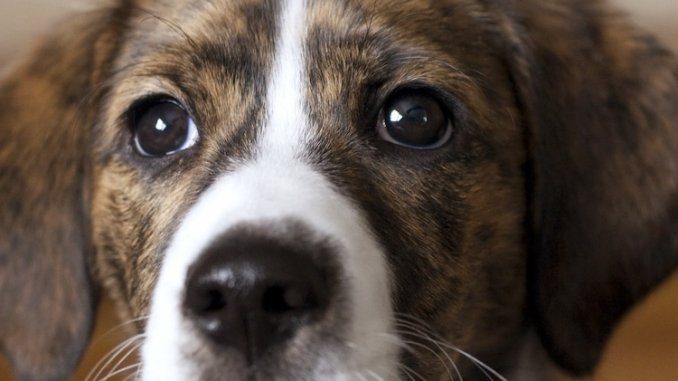
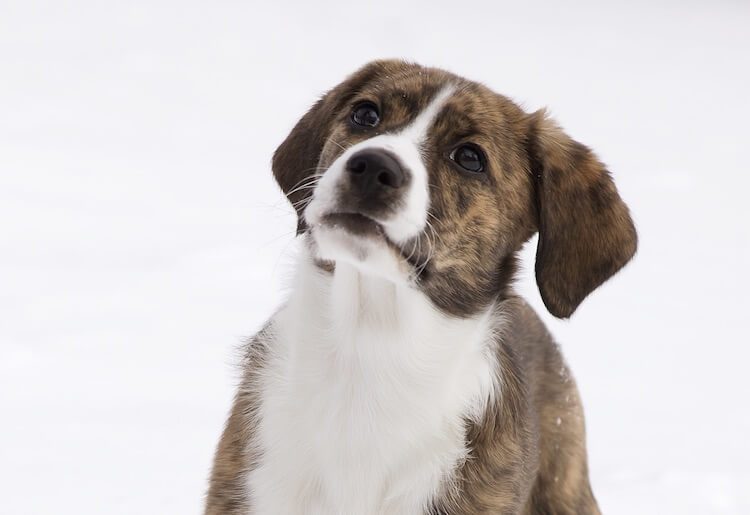


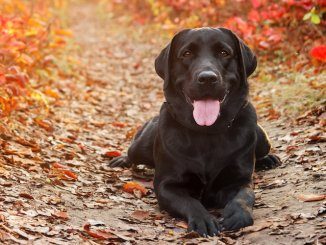
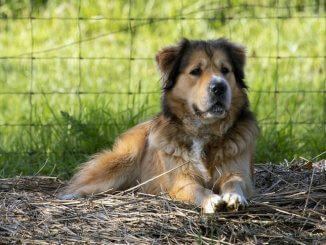
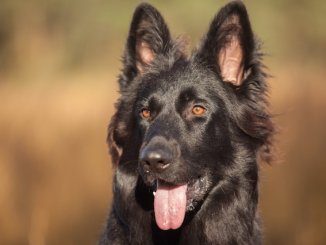
I have a 6 year old shelter Feist and she is the greatest thing to ever happen to me. I grew up w/ 5 brothers and sister but never had a dog before despite growing up in the country. After researching to find a well matched dog for me I decided to go with a Feist puppy rescue. Affectionate, smart, active, trainable, sheds minimally except in the heat of the summer when they shed their undercoat to keep cool. She is energetic but we hike or go to the beach most days and she is off leash the entire time. I hike and she runs…up the mountain and back, swims in the water (ocean and fresh) and back, ahead on the trail and back and just circles me the entire time. She is a consumate retriever w/ tennis balls. Thank God for Chuck-its. Additionally, she is INCREDIBLY affectionate, and snugglie…and manipulative. She knows she is enigmatic and even people who are NOT dog people (my Mom) seek her out. I have neighbors and family calling to ask when next I will travel so they can have her because she is so interactive and attentive to peoples need for attention and warmth. At the beginning it took consistency and patience and exercise but she learned quickly. I have 18 nieces and nephews and she is very good w/them and after a few hours she lets me know when she has had enough. The last thing, when we are on the beach(or anywhere) she will drop her tennis ball unprompted a few feet away from a young person or an adult and use her nose to roll the ball to touch their toes…and will sit rigid smiling until they throw it for her…retrieves and then again. I didn’t teach that she just really loves to engage people and they are uniformly delighted. You don’t need a huge yard just consistent exercise (walking, running, swimming) most days. She is the perfect dog for ME.
Hi Christine,
I need to ask how you trained your pup to come back when called?
I am so afraid my dog will see a squirrel and take flight, any tips would be greatly appreciated!
Get yourself a training collar with a tone and even some stimulation. Then watch a YouTube video. Some dogs are almost impossible to call off a hunt though but Feists usually respond well once trained
I have a 1/2 Mountain Feist 1/2 Aussie puppy and at 8 weeks already knows “sit” and goes outside to bathroom most all the time. Love him and hope I can train him properly. He is a busy bee.
Our feist is a little over 2.5 years and is a very smart love bug. I walk him
daily which he loves and he gets to go to the dog park occasionally which he loves as well. He’s such a good boy. I’ve tried letting him off leash a few times but alas my training has not been sufficient enough to call him back and he loves to explore and would chase a squirrel for sure. He was adopted from a rescue agency as a pup and we’re lucky to have him.
Hi Janice,
Sorry for the late reply. I trained my dog around a friend’s older, patient, very Zen Golden Retriever which was helpful. The best method for me was starting recall in the house using treats as reward and then as she matured give her a little more leeway progressing to the outside. It helped taking her to an enclosed, larger area(baseball field or tennis court) to work with her. I believe these dogs are working dogs and people pleasers so they want to be engaged. Rest assured a few times she took off but we were in a safe place so was less worried. She always returned. Again, we had to get to a trusting, responsive state but they really are so loving and definitely worth the time. Best of luck!
Christine
Three months after I lost my husband of 30 years my son gave me gorgeous little Feist. I was in love the moment she crawled out of my lap and laid across my shoulders. She is smart, very active and eager to learn. I have learned that Feists tend to think they are the leader and Bluebelle does need a firm hand at times. Most of the time she is off leash but her re-call is exceptional.
I have a 5 year old Mountain Feist. She is a wonderful companion and is kept inside. She loves walks and runs, and is great with kids and other animals. She is sweet and gentle, but wants to run or get ahead of me on walks to explore. She is a fast learner, very smart, and plays and naps with my indoor cats. She is great with other dogs and has her favorite “friends” around the neighborhood. She has been a blessing for me. Love my sweet girl Ruby!
We have a almost 2yr old Mountain Feist. She is very loving to us but not so much with other people. We have to put her in a separate room when we have company. How can we fix that?